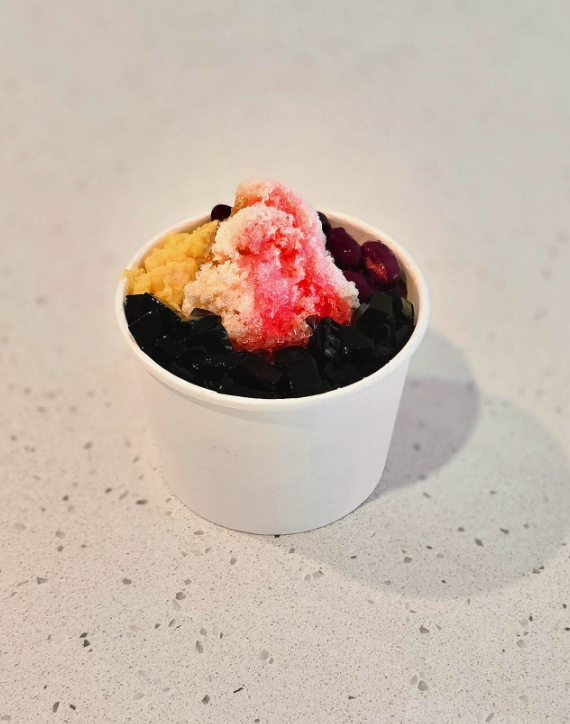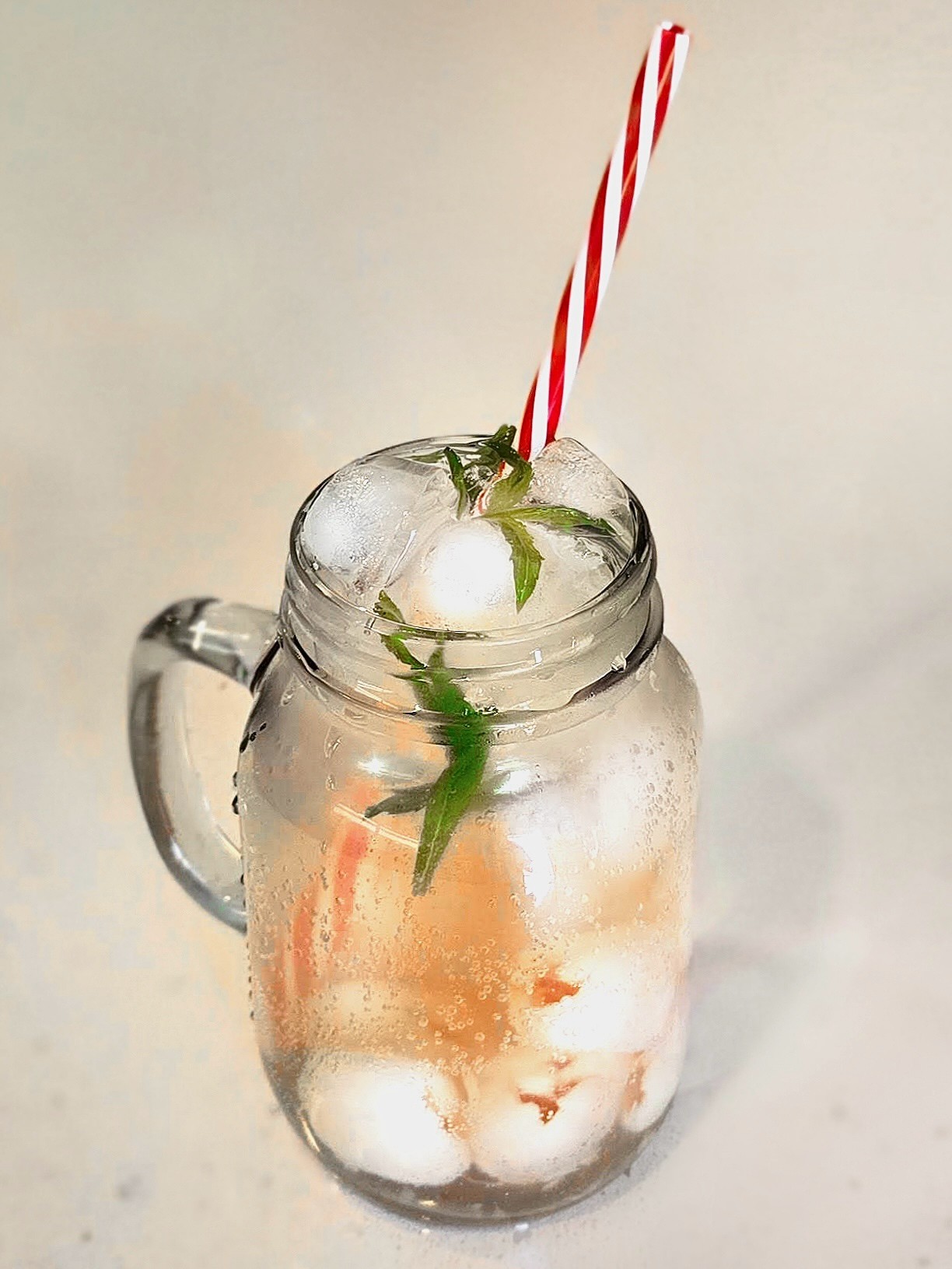Malay Sips
Ice Kacang:

also known as ABC (Air Batu Campur), is a popular Southeast Asian dessert, especially enjoyed in Malaysia and Singapore. Its origins are deeply rooted in the region's cultural and culinary history, influenced by a mix of local traditions and the introduction of ice-making techniques.
Origins:
Malaysian and Singaporean Roots: Ice Kacang is believed to have originated in Malaysia, specifically in the Perak region, during the colonial era when ice-making became more widespread. The name "Kacang" refers to the red beans that are often included in the dish. Over time, "Ice Kacang" became a general term for a variety of shaved ice desserts.
Influence of Chinese Immigrants: The dessert’s origins are thought to be influenced by Chinese immigrants, particularly the Hakka Chinese community. They were familiar with using shaved ice in their traditional desserts, which helped shape Ice Kacang’s development.
Development of Ice-Related Desserts: As ice became more accessible in the 19th and early 20th centuries (through refrigeration), shaved ice desserts became more common in Southeast Asia. Vendors began to experiment with local ingredients, incorporating elements like sweet corn, grass jelly, red beans, agar-agar (gelatin), and syrups made from rose or pandan leaves.
Evolution and Ingredients:
Ice Kacang was originally simple—just shaved ice served with sweet syrup and beans. However, over time, more ingredients were added:
Shaved Ice: The base of the dessert is finely shaved ice.
Beans: Red beans (adzuki or mung beans) are traditionally used.
Syrups: Sweet syrups such as rose or gula melaka (palm sugar syrup) are poured over the ice.
Toppings: Additional toppings include sweet corn, grass jelly, agar-agar, crushed peanuts, and condensed milk.
The term "Air Batu Campur" literally means "mixed ice water" in Malay, referring to the shaved ice base, while "Ice Kacang" specifically points to the inclusion of beans (kacang means "bean" in Malay).
In summary, Ice Kacang is a result of the cultural fusion in Southeast Asia, evolving from local and Chinese influences, and reflecting the region's love for cold, refreshing treats in hot climates.
Cendol:

Cendol is a popular traditional dessert and drink found in Southeast Asia, especially in Malaysia, Singapore, Indonesia, and Thailand. It's a refreshing treat typically made with shaved ice, green rice flour jelly (cendol), coconut milk, and palm sugar syrup. The origins of cendol are often debated, but it is widely believed to have emerged from the broader culinary traditions of the region.
Origins of Cendol:
Early Influences from Southeast Asia: Cendol is thought to have originated in Southeast Asia, with different countries laying claim to its creation. The drink's roots likely trace back to the Malay Archipelago (encompassing modern-day Malaysia, Singapore, and Indonesia) where cold, refreshing beverages have long been popular in the hot, tropical climate.
Rice Flour Jelly: The distinctive green "jelly" strands that give cendol its unique texture and appearance are made from rice flour. These jellies are typically flavored with pandan leaf to give them their green color and aromatic fragrance. The concept of using rice flour to make jellies is not unique to cendol and can be traced back to various traditional Asian desserts that use similar ingredients. The addition of pandan, a fragrant leaf often used in Southeast Asian cooking, became a defining characteristic of cendol.
Palm Sugar and Coconut Milk: The use of palm sugar (or gula melaka in Malaysia) and coconut milk in cendol links the dessert to the region's widespread use of tropical ingredients. Palm sugar is made from the sap of palm trees, which are abundant in Southeast Asia, and coconut milk has been a staple in many traditional Southeast Asian desserts for centuries. The sweetness of the palm sugar combined with the richness of the coconut milk creates a deliciously balanced flavor.
Cultural Influence and Spread: Cendol's exact origins are uncertain, but it is believed to have been influenced by Indian and Chinese culinary traditions. Indian influence on Southeast Asian cuisine can be seen in the use of rice flour-based jellies and the practice of sweetening dishes with sugar derived from local plants. Chinese culinary traditions, especially those in southern China and the Teochew region, contributed to the use of shaved ice and sweet syrup-based drinks, which may have influenced cendol’s evolution.
Regional Variations:
Malaysia and Singapore: In Malaysia and Singapore, cendol is a popular street food and is often served in a cup or bowl, topped with shaved ice, sweet palm sugar syrup, coconut milk, and the green jelly. It's commonly enjoyed as a refreshing treat during hot weather or as a dessert after meals.
Indonesia: In Indonesia, cendol is typically served as a drink, and the jelly may have slight variations in texture and color. It’s sometimes called Es Cendol or Es Dawet in certain regions, with differences in the sweet syrup and toppings.
Thailand: In Thailand, a similar dessert called "Chendol" can be found, often served in a bowl with similar ingredients but sometimes incorporating different toppings like durian or other tropical fruits.
Evolution of Cendol:
Over time, cendol has been adapted in various countries and regions, with minor modifications in the ingredients and preparation methods. In addition to the traditional combination of coconut milk, palm sugar, and cendol jelly, modern variations may include additional toppings like sweet corn, sago pearls, or red beans, reflecting local preferences and availability of ingredients.
Summary:
Cendol is a product of Southeast Asia's rich cultural fusion, blending Malay, Chinese, and Indian influences, and drawing on local ingredients like pandan, palm sugar, and coconut milk. Its origins are likely rooted in the Malay Archipelago, where cold, sweet desserts made with rice flour and tropical ingredients have been enjoyed for centuries. Today, cendol is a beloved and refreshing treat that varies slightly from country to country, but retains its fundamental ingredients and comforting flavors.
Lychee Soda:

Lychee soda is a refreshing, sweet, and slightly floral beverage that blends the unique flavor of lychee fruit with carbonated soda. It is particularly popular in many parts of Asia, especially in China, Taiwan, and Southeast Asia, where the lychee fruit is abundant. While the exact origins of lychee soda are not entirely clear, the drink likely emerged as a modern innovation blending traditional ingredients with Western influences, particularly the rise of soda and carbonated drinks in the 20th century.
Origins of Lychee Soda:
Lychee Fruit's History: The lychee fruit (Litchi chinensis) is native to southern China, and has been cultivated for thousands of years. It was highly prized by Chinese emperors and aristocrats in ancient times. Over the centuries, it spread throughout Southeast Asia and beyond, becoming a popular tropical fruit in countries like Thailand, Vietnam, Malaysia, and Taiwan.
Traditional Uses of Lychee: In traditional Chinese cuisine, lychee has been used in a variety of ways: as a fresh fruit, in desserts, soups, teas, and even in alcoholic beverages like lychee wine. Lychee syrup or canned lychee also became common in many Asian countries as the fruit was preserved for longer shelf life. In drinks, lychee has often been paired with other tropical fruits or ingredients such as coconut milk, tea, or sweetened condensed milk.
The Rise of Carbonated Drinks: The development of carbonated soft drinks in the late 19th and early 20th centuries, especially with the advent of cola and soda pop in the West, influenced drink culture around the world. By the mid-20th century, sodas had become popular in Asia as well, especially in countries like Japan, Taiwan, and Hong Kong. Soda companies began experimenting with various fruit flavors to cater to local tastes.
Fusion of Lychee with Soda: Lychee soda is likely a product of this fusion of traditional flavors and modern Western soda culture. The combination of the sweet, aromatic lychee fruit and the refreshing effervescence of soda would have appealed to consumers in the hot climates of Asia. In Taiwan, for example, the practice of adding lychee syrup or juice to carbonated water could have evolved into the lychee soda that we know today.
Taiwan is often credited with popularizing fruity sodas and drinks like bubble tea (boba), which blends tea with syrupy fruit flavors. Lychee, being a beloved tropical fruit, became a natural addition to the range of fruit-flavored sodas.
Commercialization and Global Spread: Lychee soda gained further popularity with the rise of bottled beverages. Bottled lychee soda became a mainstream product in Taiwan, Hong Kong, and other parts of Asia. Large beverage companies, like Suntory and Coca-Cola, began to include lychee-flavored sodas and drinks in their product lines, making the beverage more widely accessible.
In the 1990s and early 2000s, the globalization of Asian food culture led to the spread of lychee soda to other parts of the world, particularly in international markets with large Asian diasporas, such as North America and Europe. The drink became popular in Asian fusion restaurants, bars, and supermarkets outside of Asia.
Modern Variations:
Lychee Soda with Alcohol: In addition to non-alcoholic versions, lychee soda has also become a popular mixer for cocktails, often paired with spirits like vodka, gin, or rum. This variant combines the fruitiness of the lychee with the refreshing qualities of soda and the kick of alcohol.
Boba Lychee Soda: In recent years, boba (tapioca pearls) and fruit toppings have been added to the drink, combining the texture of chewy pearls with the sweet and bubbly flavors of lychee soda.
Summary:
While the precise origin of lychee soda is unclear, it is the result of the fusion of traditional Asian fruit flavors (specifically lychee) wit…
